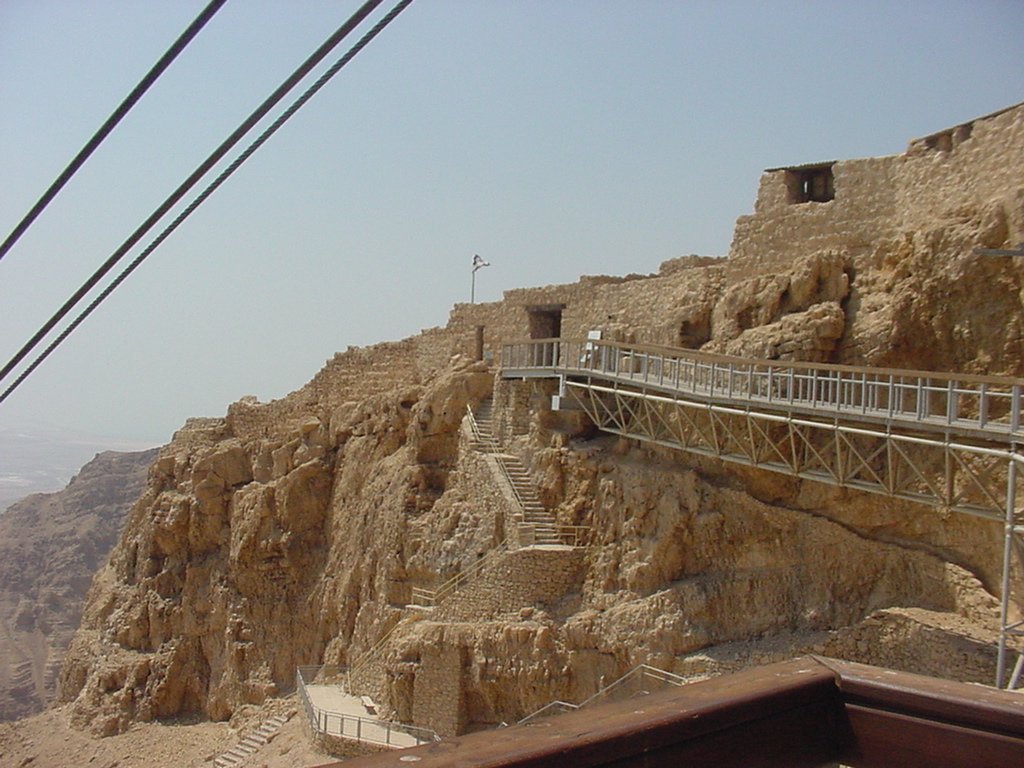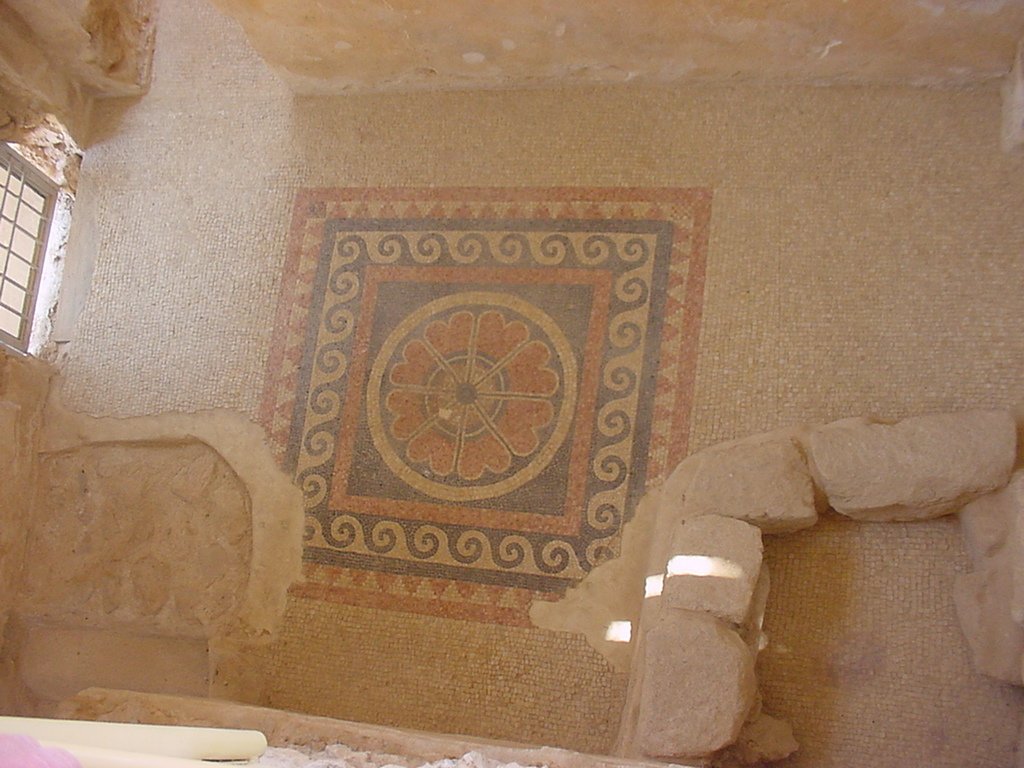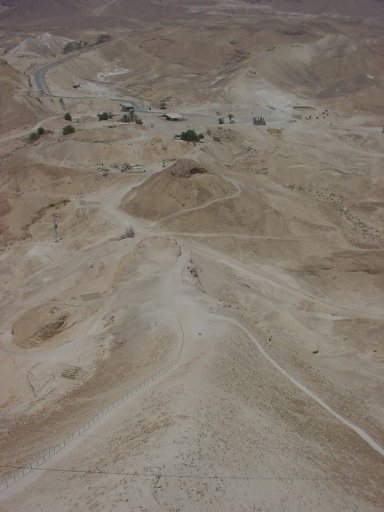

Click on an image to enlarge.
A new window will open.
 Masada is a place of reverence for Israelis because it carries ancient memories
of independence and rebellion for the Jewish people. In 74 AD, a band of almost
1000 Jewish rebels escaped the city of Jerusalem, where the nation of Israel had
re-established its capital after the Babylonian Exile. Roman occupiers had
destroyed the city and its temple, the second temple of Solomon in 70 AD, during
the Great Jewish Revolt of which began in 66 AD. The Jewish rebels had
created their own society in the desert lands south of their former capital,
near the desolate outpost of Qumran, where the Dead Sea Scrolls were found. The
Essenes, an cult-like sect of Judaism, had removed themselves from all social
contact by establishing their community in the caves around the Dead Sea. It was
there that they waited for the Messiah to deliver them from Roman rule. Masada
had been established as a desert fortress by King Herod about fifty years
earlier.
Masada is a place of reverence for Israelis because it carries ancient memories
of independence and rebellion for the Jewish people. In 74 AD, a band of almost
1000 Jewish rebels escaped the city of Jerusalem, where the nation of Israel had
re-established its capital after the Babylonian Exile. Roman occupiers had
destroyed the city and its temple, the second temple of Solomon in 70 AD, during
the Great Jewish Revolt of which began in 66 AD. The Jewish rebels had
created their own society in the desert lands south of their former capital,
near the desolate outpost of Qumran, where the Dead Sea Scrolls were found. The
Essenes, an cult-like sect of Judaism, had removed themselves from all social
contact by establishing their community in the caves around the Dead Sea. It was
there that they waited for the Messiah to deliver them from Roman rule. Masada
had been established as a desert fortress by King Herod about fifty years
earlier.
 The
Jewish rebels faced overwhelming odds of survival against the superior
Roman forces that hounded and eventually surrounded them. At Masada, they had
some freedom, at least as much as they could forge in the desert wilderness. The
King, Herod Antipas, established his throne at Masada as well, transferring
wealth and riches from Jerusalem to his outpost in the desert atop the mountain.
The Jewish community used the technology of the time to transport water to the mountaintop,
where they created mosaic-lined Roman baths, a synagogue, and common dwellings
in the extreme heat.
The
Jewish rebels faced overwhelming odds of survival against the superior
Roman forces that hounded and eventually surrounded them. At Masada, they had
some freedom, at least as much as they could forge in the desert wilderness. The
King, Herod Antipas, established his throne at Masada as well, transferring
wealth and riches from Jerusalem to his outpost in the desert atop the mountain.
The Jewish community used the technology of the time to transport water to the mountaintop,
where they created mosaic-lined Roman baths, a synagogue, and common dwellings
in the extreme heat.
 The
Roman legions eventually surrounded the rebels at Masada. They formed two
encampments at the foot of the mountain. When the Roman decided to attack, they
built a ramp from the desert below to the top, allowing them access to the
living quarters, worship area, and resources of the Jewish rebels. When they
arrived, they found all of the inhabitants dead. Rather than be captured and
enslaved by the Romans, they committed mass suicide, each slaying the other
until only one remained. The final survivor took his own life in a final act of
defiance. The Romans had been defeated, albeit in the death of the Jewish
community at Masada.
The
Roman legions eventually surrounded the rebels at Masada. They formed two
encampments at the foot of the mountain. When the Roman decided to attack, they
built a ramp from the desert below to the top, allowing them access to the
living quarters, worship area, and resources of the Jewish rebels. When they
arrived, they found all of the inhabitants dead. Rather than be captured and
enslaved by the Romans, they committed mass suicide, each slaying the other
until only one remained. The final survivor took his own life in a final act of
defiance. The Romans had been defeated, albeit in the death of the Jewish
community at Masada.
Read more about Masada
at The Jewish Virtual Library
PBS: From
Jesus to Christ: Masada-- A Portrait
Check out George Cassutto's Photo Album of Israel
All Images © George Cassutto, 2004
(Except otherwise noted)